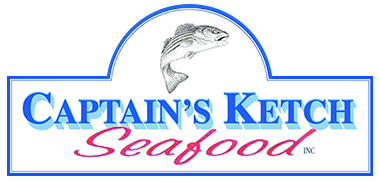Common Questions from our Customers
We love your questions. Please keep asking us! Nothing makes us as happy as being able to share with you our vast knowledge and experience buying and selling fresh seafood.
Is the North Atlantic Salmon farm raised?
Yes, our north Atlantic salmon is a high quality, farm raised product from either Scotland or Norway. Captain’s Ketch specifically partners with aquaculture farms that are focused on responsible sustainability and farms that cultivate the fish in the wild.
What types of fish are local?
We generally have a few local seafoods available. When the commercial rockfish is in season, we only use local Maryland rockfish. During oyster season, our packed oysters are harvested from the Chesapeake Bay. We also carry skipjack oysters which are harvested from very local waters. Our crabmeat is picked and packed in Cambridge, Maryland and our soft crabs are provided by a local waterman near Hooper’s Island.
Do we ship our crabcakes?
The answer is no. In recent years, we are reluctant to ship due to the exorbitant cost of shipping.
When are oysters available?
Generally, we follow the old adage, “Only eat oysters in months that contain the letter ‘R’. So generally speaking, the season usually starts in September and ends in April. The colder the water the better.
When are crabs in season?
Although we do not offer hard steamed crabs, we do carry fresh picked crab meat and soft crabs from Spring to fall. Essentially when the water warms up, local oysters are no longer available and the crabs come in, weather dependent.
I’m having a dinner party next week, can I order some soft shell crabs now?
Soft shell crabs are an unpredictable bunch. Mother Nature dictates when the crabs shed, so we can’t guarantee that they will be available on a specific date but we will try our best. When fresh soft crabs are not available, we often carry frozen soft crabs that we process in-house.
What is the proper way to ensure that the fish is fresh?
At Captain’ Ketch, the majority of the fish we buy are whole fish. A whole fish provides us with a better, more complete knowledge of the health and freshness of the catch. There are a few key indicators that we look for when inspecting a fish. We need clear eyes, firm flesh, red gills and a pleasant scent. For example, the belly of a very fresh, eviscerated Scottish Salmon smells of sliced watermelon.


